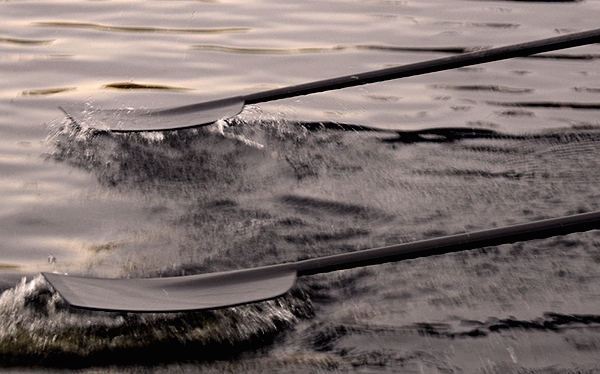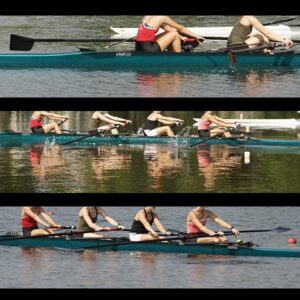Innovation & Performance
Dreher oars have helped lead the industry in terms of design, function and performance for over three decades. Our focus on hydrodynamics as well as materials performance has been the cornerstone of Dreher oar development. Our sweep oars have helped crews reach the top step of the podium at all levels of competitions. From domestic club racing to international world records Dreher sweep oars have played an integral role.

Slim Ellipse Sweep Oar
Since 2009 Dreher has had aerodynamic sculling oars and has now extended this efficient shape to a slim sweep oar. This is a totally new design. Along with an overall slimmer shaft profile it has two handle sizes, an aerodynamic outboard shaft, the “Tool Free Adjustable” feature and a new Ellipse blade shape that maintains the contour of the proven “Apex”, but with enhanced hydrodynamics. The oar shaft transitions from a slim circular shaft to a slimmer elliptical shape as the shaft approaches the blade. The oar shaft has a smooth organic transition to our new Ellipse blade promoting a clean catch and release. As in any oar the later the “square-up” and the cleaner the blade work at the catch and finish, the greater the potential for speed.
Slim Ellipse Blade Design
The Slim Ellipse sweep oar incorporates our new Apex-E Blade design, which represents a major leap forward in blade design. These blades have both a smooth front surface, and most importantly, a smooth back surface to provide better hydrodynamic lift. The shaft attachment spline on the blade angles slightly upwards along the top, or “Apex-E” of the blade approximately level with the blade top/water interface to minimize drag as the blade sweeps first out and then back toward the boat. It also has an elliptical and seamless attachment to the shaft.
Blade Design & Bernoulli’s Theorem
The theory of a smooth faced blade causing less-disturbance to the flow of water over the front face of the blade seemed to us to be in direct contradiction to basic hydrodynamic theory. We theorized that potential gains in hydrodynamic lift could be achieved if the back, not just the front face of the blade, is free of impediments to the smooth movement of water in the direction of flow. It is not the front, but the back of the blade with its longer curved surface that accelerates the water flow due to pressure decrease (Bernoulli’s Theorem) and this should provide a lifting force as the blade traverses out to the 90 degree stall position and back again during each stroke. By making the back surface “smooth” with the spine, or shaft-attaching ridge parallel to the water flow, the blade would be more efficient and easier to handle.
The spine was changed to a smooth round contour and the volume calculated to effect a displacement enough to give the correct buoyancy as well as the right weight and weight distribution, which affects the balance point.

